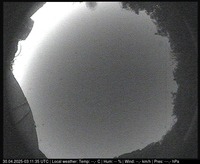Hier finden Sie die bisher vergebenen Namen für „Heppenheimer“
(also auf der Starkenburg-Sternwarte entdeckte) Kleinplaneten
und die zugehörigen offiziellen Laudatien.
(Stand: 13.08.2014)
(342431) Hilo = 2008 UQ90
Discovered 2008 October 25 at the Starkenburg Observatory, Heppenheim.
Hilo is the largest city on „The Big Island“ of Hawai’i. Hilo is one of the rainiest cities in the world, home of the University of Hawai’i at Hilo, and is famous for the annual Merrie Monarch Festival, a week-long celebration of ancient and modern hula.
(216624) Kaufer = 2002 XW37
Discovered 2002 December 9 at the Starkenburg Observatory, Heppenheim.
German astronomer Andreas Kaufer (b. 1968) is director of operations at the European Southern Observatory’s Paranal Observatory. In 1983 he started his career as an amateur astronomer at the Starkenburg Observatory, where this minor planet was discovered. The name was suggested by codiscoverer E. Schwab.
(209083) Rioja = 2003 SN15
Discovered 2003 September 17 at the Starkenburg Observatory, Heppenheim.
Rioja is a wine made from grapes grown in the autonomous community of La Rioja and in parts of Navarre and the Basque province of Álava. The most widely-used grape is the richly flavored Tempranillo. The discoverer remembers this wine well from occasional otherwise cheerless cloudy Spanish observing nights.
(196640) Mulhacén = 2003 SO15
Discovered 2003 September 17 at the Starkenburg Observatory, Heppenheim.
With a height of 3482 m above sea level, Mulhacén is the highest mountain of the Iberian Peninsula, located in the Sierra Nevada mountain range in Andalusia, southern Spain. Its name comes from Muley Hacén, one of the ancient kings of the nearby city of Granada, who, according to legend, was buried on the mountain.
(189202) Calar Alto = 2003 SM15
Discovered 2003 September 17 at the Starkenburg Observatory, Heppenheim.
The Calar Alto Observatory is located in the Sierra de los Filabres in Andalusia, southern Spain. With its 3.6-m, 2.2-m, 1.5-m and 1.2-m telescopes it is the largest optical observatory on the European continent. It has been actively involved in observation of solar-system objects since its foundation in 1975.
(121232) Zerin = 1999 RK35
Discovered 1999 September 11 at the Starkenburg Observatory, Heppenheim.
ZERIN (Zentrum für Rieskrater- und Impaktforschung Nördlingen) is a scientific institute for impact research and, in particular, documentation of the Nördlinger Ries Crater. The name was suggested by P. Geffert.
(56561) Jaimenomen = 2000 JG7
Discovered 2000 May 5 at the Starkenburg Observatory, Heppenheim.
Jaime Laureano Nomen Torres (b. 1960) is the most prolific discoverer of minor planets at the Observatorio Astronomico de Mallorca. He designed the robotic telescope systems used for the „Unicorn Project“ to search for minor planets and comets. He works as an odontologist in Barcelona and Tarragona.
(40764) Gerhardiser = 1999 TA16
Discovered 1999 October 13 at the Starkenburg Observatory, Heppenheim.
Gerhard Iser (b. 1962) was heavily involved with observations of minor planets at the Starkenburg Observatory during 1978-1982 and at that time was the mentor of Erwin Schwab, Jr., one of the discoverers of this minor planet. Iser is also an excellent photographer and performer on the harmonica.
(38270) Wettzell = 1999 RJ35
Discovered 1999 September 11 at the Starkenburg Observatory, Heppenheim.
The Geodetic Fundamental Station Wettzell in the Bavarian Forest supplies observational contributions to the International Terrestrial Reference System with radio interferometry and laser ranging to artificial satellites. The name was suggested by P. Geffert.
(35357) Haraldlesch = 1997 SX9
Discovered 1997 September 28 at the Starkenburg Observatory, Heppenheim.
Harald Lesch (b. 1960), a professor of astronomy and astrophysics at the University of Munich, is also a broadcaster and author, energetic and successful in popularizing astronomy and philosophy. The name was suggested by T. Häusler.
(33863) Elfriederwin = 2000 JH7
Discovered 2000 May 5 at the Starkenburg Observatory, Heppenheim.
Elfriede Schwab (b. 1934) and Erwin Schwab, Sr., (b. 1924) are the parents of Erwin Schwab, Jr., one of the discoverers of this minor planet.
(27984) Herminefranz = 1997 VN
Discovered 1997 Nov. 1 at the Starkenburg Observatory, Heppenheim.
Hermine (b. 1954) and Franz Stoss (b. 1950) are the parents of Reiner Michael Stoss, discoverer of this minor planet. They have strongly supported their son’s activities in minor planet work at the Starkenburg Observatory, Heppenheim. The family emigrated from the Banat region to Germany in 1987.
(24168) Hexlein = 1999 WH9
Discovered 1999 Nov. 29 at the Starkenburg Observatory, Heppenheim.
„Hexlein“ is the German word for „Little Witch“ and the childhood nickname of Renate Kühnen. She is a friend of Rainer Kresken, co-discoverer of this minor planet.
(21663) Banat = 1999 RM
Discovered 1999 Sept. 3 at the Starkenburg Observatory, Heppenheim.
The Banat, home of the „Donauschwaben“, is a European region between the Maros river in the north, the Transylvanian Alps in the east, the Danube river in the south and Tisza river in the west. Since the Treaty of Trianon in 1920 the Banat has been divided between western Romania, northern Yugoslavia and eastern Hungary.
(18653) Christagünt = 1998 FW15
Discovered 1998 Mar. 28 at the Starkenburg Observatory, Heppenheim.
Christa (b. 1938) and Günter Rothermel (b. 1938) are the parents of Jens Rothermel, one of the discoverers of this minor planet. They led him to astronomy as his hobby. They support their two children (Thomas and Jens) in an excellent way. The family lives at the „Bergstrasse“, a beautiful region in Germany.
(18610) Arthurdent = 1998 CC2
Discovered 1998 Feb. 7 at Starkenburg Observatory.
The earthling Arthur Dent is confronted with the adversities of life, the universe and everything in a highly amusing and entertaining way in Douglas Adams‘ famous five-volume trilogy „The Hitch Hiker’s Guide to the Galaxy“.
(18567) Segenthau = 1997 SS4
Discovered 1997 Sept. 27 at the Starkenburg Observatory, Heppenheim.
Segenthau, located in the Banat region south of the Maros river, is a small village founded in 1771 by German colonialists. It is also the childhood home of Reiner Michael Stoss, discoverer of this minor planet.
(17855) Geffert = 1998 KK
Discovered 1998 May 19 at the Starkenburg Observatory, Heppenheim.
The German amateur astronomer Martin Geffert (b. 1922) has been very dedicated to the Starkenburg Observatory, being one of the founders and treasurer of the observatory since its beginnings in 1970. He is also an excellent performer on the mandolin.
(16969) Helamuda = 1998 UM20
Discovered 1998 Oct. 29 at the Starkenburg Observatory, Heppenheim.
Helamuda is an acronym for Hessisches Landesmuseum Darmstadt, the museum of the federal state of Hessen. This unique institution features exquisite collections in both fine arts and natural sciences and conducts paleontological excavations at the nearby Messel site.
(16809) Galápagos = 1997 US
Discovered 1997 Oct. 21 at the Starkenburg Observatory, Heppenheim.
The Galápagos Islands are a world heritage site and provide a living history of evolution. Assisted by the Charles Darwin Research Station located there, scientists have made many discoveries. The station also helps to preserve this National Park with its famous animals, such as the giant tortoises and the Darwin finches.
(15397) Ksoari = 1997 UK7
Discovered 1997 October 27 at the Starkenburg Observatory at Heppenheim.
The KSO-ARI Minor Planet Surveys were conducted by F. Börngen (Karl-Schwarzschild-Observatorium, Tautenburg) and L. D. Schmadel (Astronomisches Rechen-Institut, Heidelberg) with the Tautenburg Schmidt Telescope between 1990 and 1993. The surveys resulted in 501 discoveries of minor planets.
(14080) Heppenheim = 1997 GB
Discovered 1997 Apr. 1 at the Starkenburg Observatory, Heppenheim.
The beautiful city of Heppenheim, with its medieval old town that was first mentioned in the year 755, is situated in a traditional wine-growing region of southwestern Germany. On a hill above the city the ruins of the Starkenburg castle dominate the picturesque scenery.
(12057) Alfredsturm = 1998 DK1
Discovered 1998 Feb. 18 at the Starkenburg Observatory, Heppenheim.
German amateur astronomer Alfred Sturm (b. 1924) was one of the founders and has been president of the Starkenburg Observatory since its beginnings in 1970. Sturm is heavily involved in astronomical public education.
(12053) Turtlestar = 1997 PK2
Discovered 1997 Aug. 9 at the Starkenburg Observatory, Heppenheim.
The Turtle Star Observatory, located in Mülheim/Ruhr, Germany, contributed follow-up observations for this object. This private observatory was built in 1995 by A. Boeker, K. Kleemann-Boeker, A. Martin and M. Tator and is named for a neighbor’s turtle, which observed the construction with apparent great interest.





